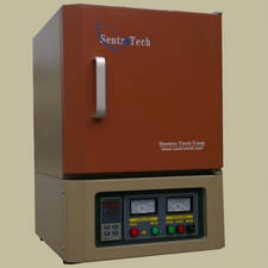
What Is a Glass-Melting Furnace?
Glass-melting furnaces — also known as annealing ovens and glass furnaces — are specialized industrial ovens that melt raw materials into a liquid state. The glass furnace is a critical component in modern glass manufacturing. Electric glass furnaces are the most common industrial annealing ovens. Materials like silica, limestone, sand, soda ash and other additives are heated to their melting point. Some of the products that are made using glass-melting furnaces include:
- Jars
- Bottles
- Glass Panes
- Lab Equipment
- Lenses
- Cookware
Who Uses Glass Furnaces?
The complete list of industries and manufacturing plants that use industrial glass furnaces is innumerable. Instead of focusing on some of the more obvious ones — such as bottle makers, window producers and cookware companies — we'll take a look at a few lesser-known industries for which glass-melting furnaces are necessary.
Aerospace
Aerospace engineers rely on glass to give pilots viewing windows from inside the cockpit. Not only does the glass need to be free of deformation and defect, but it also needs to be formed into precise shapes to maintain cabin pressure at altitude.
Medical
Hundreds of medical products are created using glass-melting furnaces. Everything from testing beakers and laboratory equipment to vials, ampoules and containers use products made from annealing ovens.
Electronics
The most widely-known use of glass is in TVs, which use tempered glass for their display screens. However, other electronics use optical fibers, ceramics and insulation such as circuit breakers — all of which are made with glass furnaces. Additionally, the most popular kinds of guitar amps use glass vacuum tubes to produce a rich, full sound.
How Hot Is a Glass Furnace?
Glass furnace temperature is relative to the materials being used. The annealing oven needs to exceed the glass melting point in order to turn the raw materials into liquid form. Most industrial glass furnaces have a maximum temperature range between 1700-2000°C. The heating chamber is raised to the necessary level to melt the materials while the temperature is controlled by the oven's internal sensors and temperature controls.

How Does a Glass Furnace Work?
A glass-melting furnace is similar to other industrial furnaces. The products are placed inside a heating chamber that is brought up to the appropriate temperature. The materials melt into a heated liquid. The resulting product is often stirred to remove impurities and ensure that the additives are mixed together.
Next, the heated liquid is removed from the glass furnace and formed. Most industrial processes will pour the molten glass into a mold to create the desired shape. The glass is then cooled and the resulting product is inspected, cleaned and polished if required.
Other Types of Annealing Furnaces
While electric glass furnaces are the most common variety in today's manufacturing environments, other types of annealing furnaces can be used depending on your need or application. Here's a brief overview of some other kinds of glass furnaces.
1. Direct (or Indirect) Fire
In a direct-fire furnace, the heat source is applied directly to the raw materials. This is generally achieved by using burners that use fuels such as natural gas or propane. An indirect-fired furnace is the opposite — the heat source is located in a separate chamber and passed into the glass melter through a heat exchanger.
2. Oxy-Fuel Furnace
An oxy-fuel furnace is a type of glass-melting furnace that mixes oxygen and fuel together. The fuel — typically natural gas — generates the heat needed to melt the glass. Oxygen enriches the fuel and allows it to burn at the high temperatures needed to melt the raw materials.
Regenerative Furnace
A regenerative furnace is a type of annealing oven that uses heat exchangers to capture and store heat. The heat exchangers are usually made of brick or ceramic materials that can withstand the high temperatures needed to melt glass.
Find New Glass Furnaces at Sentro Tech
At Sentro Tech, we offer a wide variety of glass-melting furnaces and ovens to meet today's industrial challenges. Our glass furnaces can be customized to suit both large and small manufacturing processes. Get the most out of your annealing oven with precision temperature controls and durable construction materials. Improve your glass manufacturing today with an energy-efficient industrial glass furnace from Sentro Tech.
Contact Us
